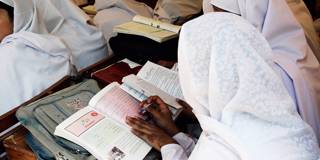Boosting literacy in challenging circumstances requires planning, resources, and commitment, but is undoubtedly worth the investment. Pakistan must now make literacy a priority and implement a nationwide program that takes into account the country’s multi-ethnic and multilinguistic nature.
ISLAMABAD – In every country, literacy has been essential to support a wide range of social and development goals, from political participation to good health outcomes. Among literate mothers, infant mortality rates drop significantly. Children from low-literacy areas, by contrast, not only do worse at school, and hence have fewer economic opportunities, but also have much lower life expectancies than their peers in high-literacy areas.
Yet, in Pakistan, boosting literacy has always been on the back burner, even compared to other education goals such as improving the primary-to-secondary transition. As a result, the country’s average literacy rate has fluctuated between 57% and 60% over the past decade, well below the regional average of 67%. Pakistan has the second-lowest literacy rate in South Asia after Afghanistan, and in adult literacy it ranks 150th out of 188 countries worldwide.
There are also major gender disparities: the literacy rate for Pakistani males is 68%, compared to 45% for females. Likewise, there is a yawning gap between urban and rural areas, which have literacy rates of 74% and 46%, respectively. What’s more,Afghanistan and Pakistan are the only two countries in the region where this disparity persists among younger generations,indicating that overall literacy is unlikely to improve significantly in the near future.

ISLAMABAD – In every country, literacy has been essential to support a wide range of social and development goals, from political participation to good health outcomes. Among literate mothers, infant mortality rates drop significantly. Children from low-literacy areas, by contrast, not only do worse at school, and hence have fewer economic opportunities, but also have much lower life expectancies than their peers in high-literacy areas.
Yet, in Pakistan, boosting literacy has always been on the back burner, even compared to other education goals such as improving the primary-to-secondary transition. As a result, the country’s average literacy rate has fluctuated between 57% and 60% over the past decade, well below the regional average of 67%. Pakistan has the second-lowest literacy rate in South Asia after Afghanistan, and in adult literacy it ranks 150th out of 188 countries worldwide.
There are also major gender disparities: the literacy rate for Pakistani males is 68%, compared to 45% for females. Likewise, there is a yawning gap between urban and rural areas, which have literacy rates of 74% and 46%, respectively. What’s more,Afghanistan and Pakistan are the only two countries in the region where this disparity persists among younger generations,indicating that overall literacy is unlikely to improve significantly in the near future.